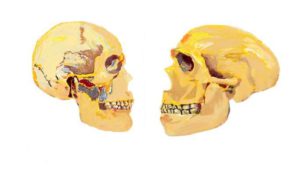Self-Domestication: A Calculated Decision
[AdSense-A]
Domestication is a trick few species have pulled. In fact, there are less than 20 animals that meet the requirement of being defined as domesticated. Most of these animals are herd animals. Various types of goats, cattle, sheep, and horses being the most common. Domestication of these species was something that early humans labored to accomplish. Meticulously breeding pairs of these creatures who possessed desirable traits. Most notably the ability to be around humans. But four creatures on earth were not bred to domesticate, they decided to domesticate.
The first is perhaps a surprise but also very obvious. The earliest known domestication occurred in humans! By definition, the decision early humans made to accept the company of other humans outside of their immediate family group, is a form of domestication. This trait allowed ancient humans to gather in increasingly large numbers and provided the base for what would become civilization.
Humans are not the only primate to undergo this type of self-domestication. Bonobos have also domesticated themselves. Allowing gatherings far larger than any other primate (with the exclusion of humans). This also accounts for the extremely calm and accepting nature of bonobos. A trait not shared by their closes relative, the chimpanzee. The lack of self-domestication of the chimpanzee has prevented their groups from becoming as large as bonobos and created a system of control based in violence rather than the aged hierarchy that tends to dictate bonobo society.
While humans and bonobos might be self-domesticated, their lifestyles do not really imitate what we have come to define as domesticated. Which is to say, an animal controlled by another species (humans). For this, we must look to the only other two animals that made the decision to self-domesticate. If you cannot think of what these two animals might be, just look up, there is a good chance one of them is around you as you read this article.
Dogs are recorded as the first self-domesticated animal that chose to live with humans. It started slowly and humans and dogs were likely going through their respective self-domestications simultaneously. Wolf packs are highly exclusive and competitive. It is not uncommon for wolves to go nearly their entire lives outside the acceptance of pack. As such, it is easy to imagine a starving wolf coming across a human camp, perhaps their waste area, and deciding, “hey, this looks edible.” These mooching wolves would not exactly be a pest either. With an incredible sense of hearing and smell, it would not be difficult for humans to use these wolves as a warning system for more dangerous creatures lurking in the dark. This mutual benefit is really where the spark of self-domestication ignites.
The last self-domesticated animal is that other non-human member of many households. While dogs joined the human experiment as early as 33,000 years ago, cats came later. It was only after the Neolithic Agricultural Revolution—around 12,000 years ago—that cats saw a place in human society.
As humans perfected the growth and storage of grains, we were presented with a problem. Where there is grain, there are rodents. Rodents who spread disease and can ruin an entire season of crop in a remarkably short period of time. As humans struggled to deal with this new problem, a solution walked right out of the natural world. African Wildcats, only slightly larger than the modern housecat, existed in a world of terror. A strict carnivore, the small sized creature struggled in a world of high competition and much larger carnivores who would gladly have them for a snack. Like wolves, wildcats are a naturally intelligent creature who would have easily made two connections, the first being the same as wolves, that where there are humans, there is food. The second was more unique to cats. As a smaller carnivore they would also have enjoyed the fact that where there are humans, there is not really anything else. The natural fear that most creatures feel at the very sight, smell, or sound of a human, provides a wondrous layer of protection for a creature that otherwise needed to be on constant high-alert.
Since the cat self-domesticated almost 10,000 years ago, not a single other creature has made the jump. Instead humans began to diversify the only two creatures who self-domesticated themselves to human control. While selective breeding would not occur for thousands of years, a natural diversification would take the dog, cat and human relationship worldwide. While no doubt early humans felt the same bond modern humans feel towards pets, the reality is this spread was done out of necessity, not desire. The dog has been taught to help control other domesticated animals and has protected our homes for thousands of years. Cats may have been used for different reasons but were no less important to the expansion of human society. As the cat populations grew, so did human’s ability to store larger and larger amounts of grain. With such storage, cities became larger as well.
In hindsight, one could easily argue that the decision wolves and African Wildcats made tens of thousands of years ago, has been one of, perhaps the primary cause of the human conquest of earth. While most of us just think of them as pets, it must be acknowledged that before dogs self-domesticated, humans had never domesticated any animal. In reality, the mutual trial and error that wolves and humans went through together is probably the direct cause of humans being able to domesticate herd animals in the coming centuries. Thousands of years later, as humans took the knowledge of domestication the agricultural world, it is worth noting the Neolithic Agricultural Revolution might have failed outright if African Wildcats had not emerged to save it. So the next time you scratch Fluffy under the chin, or Rover behind the ear, maybe thank them for the society they and their ancestors help create.
[si-contact-form form=’2′]


